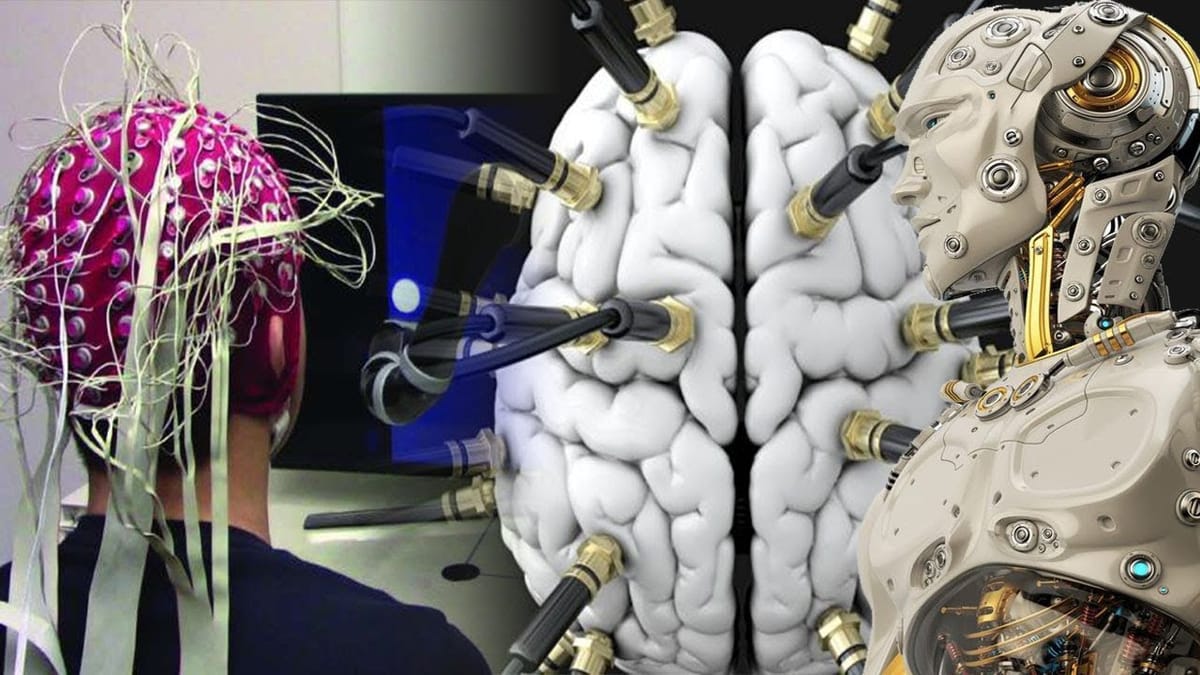China is working on advanced 'brain warfare' tech including devices designed to send enemies to sleep and thought-controlled weapons

China's military is working on new tactics involving psychology and brain-influencing tools as part of a modern war strategy, states a report on the cognitive warfare capabilities of the People's Liberation Army.
The CCP Biothreats Initiative, a research group, released a report titled "Warfare in the Cognitive Age: NeuroStrike and the PLA’s Advanced Psychological Weapons and Tactics" earlier this month.
“The PLA is at the forefront of incorporating advanced technologies such as artificial intelligence, brain-computer interfaces and novel biological weapons into its military strategies,” the think tank’s analysts concluded.
The report pointed out two recent studies conducted by the Chinese army, as noted by open-source researchers. These studies suggest that China's military is enhancing traditional "hard power" weapons with novel arms aimed at achieving victory in conflicts without relying on conventional weapons. The newly developed arms encompass biological weapons specifically designed to induce sleep or sleep-related disturbances in opposing troops. The objective is to hamper cognitive functions and alertness.
Additional weapons include devices that create a direct link between the brain and external technology, intended to impact cognitive processes and decision-making. There are also ongoing developments in brain-controlled weapons, aiming to facilitate accurate targeting and manipulation of cognitive functions in adversary troops or leaders.
The Chinese military is developing advanced weapons that a soldier can control directly with their thoughts. These weapons aim to manipulate and control the cognitive functions of enemies.
Additional weapons in development involve "genetic drugs," which are pharmaceuticals designed to alter the genetic and physiological characteristics of individuals. These drugs aim to influence cognitive, emotional, and behavioral traits.
Military tools for cognitive warfare encompass wearable devices such as anti-sleep glasses designed to enhance wakefulness and alertness. Electronic weapons include "soft-kill radio waves" utilizing electromagnetic energy for nonlethal attacks, inducing drowsiness or cognitive impairment in adversaries, as outlined in the report.
“In summary, the PLA’s integration of cutting-edge technologies such as AI, [brain-computer interfaces], and biological weapons into its military arsenal brings significant psychological dimensions to warfare, extending beyond their physical effects,” the report said.
The report was authored by four experts with military and intelligence backgrounds associated with the initiative: L.J. Eads, Ryan Clarke, Xiaoxu Sean Lin, and Robert McCreight, who initially coined the term "neurostrike" to characterize a component of brain warfare.
Referring to a 2022 Chinese army report, the document highlights the "five battles of cognition" intended for use in advanced psychological warfare operations. These operations aim to shape future battlefields beyond physical conflicts.
One of these battles involves preemptive cognition, aiming to establish the "moral high ground" for the Chinese before hostilities, as outlined in the report.
“The objective is to create a powerful deterrent and asymmetric advantage,” the report said
The experts' report also reveals anticipated Chinese defenses against psychological warfare attacks. This research is conducted by two Chinese military units, namely Unit 94969 and Unit 96812, engaged in both defensive and offensive cognitive warfare efforts.
The PLA program “represents a strategic direction, integrating neuroscience and technology to develop weapons systems that can impair cognition, reduce situational awareness, and degrade neurological functions over the long term,” the report said.
“The CCP‘s vision for NeuroStrike encompasses a holistic approach, part of a broader asymmetric warfare strategy aimed at establishing a strategic edge over adversaries, particularly the United States and perceived rivals in the Indo-Pacific region, such as Taiwan, Japan, Australia, or India,” the report said, using the abbreviation for the Chinese Communist Party.
Thanks for visiting Our Secret House. Create your free account by signing up or log in to continue reading.





